Adipose stem cells from chronic pancreatitis patients improve mouse and human islet survival and function
- PMID: 28854965
- PMCID: PMC5577777
- DOI: 10.1186/s13287-017-0627-x
Adipose stem cells from chronic pancreatitis patients improve mouse and human islet survival and function
Abstract
Background: Chronic pancreatitis has surgical options including total pancreatectomy to control pain. To avoid surgical diabetes, the explanted pancreas can have islets harvested and transplanted. Immediately following total pancreatectomy with islet autotransplantation (TP-IAT), many islet cells die due to isolation and transplantation stresses. The percentage of patients remaining insulin free after TP-IAT is therefore low. We determined whether cotransplantation of adipose-derived mesenchymal stem cells (ASCs) from chronic pancreatitis patients (CP-ASCs) would protect islets after transplantation.
Methods: In a marginal mass islet transplantation model, islets from C57BL/6 mice were cotransplanted with CP-ASCs into syngeneic streptozotocin-treated diabetic mice. Treatment response was defined by the percentage of recipients reaching normoglycemia, and by the area under the curve for glucose and c-peptide in a glucose tolerance test. Macrophage infiltration, β-cell apoptosis, and islet graft vasculature were measured in transplanted islet grafts by immunohistochemistry. mRNA expression profiling of 84 apoptosis-related genes in islet grafts transplanted alone or with CP-ASCs was measured by the RT2 Profiler™ Apoptosis PCR Array. The impact of insulin-like growth factor-1 (IGF-1) on islet apoptosis was determined in islets stimulated with cytokines (IL-1β and IFN-γ) in the presence and absence of CP-ASC conditioned medium.
Results: CP-ASC-treated mice were more often normoglycemic compared to mice receiving islets alone. ASC cotransplantation reduced macrophage infiltration, β-cell death, suppressed expression of TNF-α and Bcl-2 modifying factor (BMF), and upregulated expressions of IGF-1 and TNF Receptor Superfamily Member 11b (TNFRSF11B) in islet grafts. Islets cultured in conditioned medium from CP-ASCs showed reduced cell death. This protective effect was diminished when IGF-1 was blocked in the conditioned medium by the anti-IGF-1 antibody.
Conclusion: Cotransplantation of islets with ASCs from the adipose of chronic pancreatitis patients improved islet survival and islet function after transplantation. The effects are in part mediated by paracrine secretion of IGF-1, suppression of inflammation, and promotion of angiogenesis. ASCs from chronic pancreatitis patients have the potential to be used as a synergistic therapy to enhance the efficacy of islet transplantation following pancreatectomy.
Keywords: Adipose stem cells; Chronic pancreatitis; Islet survival; Islet transplantation.
Conflict of interest statement
Ethics approval and consent to participate
All mouse surgical procedures were approved by the Animal Care Committee at the Medical University of South Carolina (protocol #AR3055). ASCs were harvested from a small piece of fat tissue from chronic pancreatitis patients undergoing pancreatic surgery who gave informed consent for the study under protocols approved by the Medical University of South Carolina Internal Review Board (Pro00028011).
Consent for publication
Not applicable.
Competing interests
The authors declare that they have no competing interests.
Publisher’s Note
Springer Nature remains neutral with regard to jurisdictional claims in published maps and institutional affiliations.
Figures
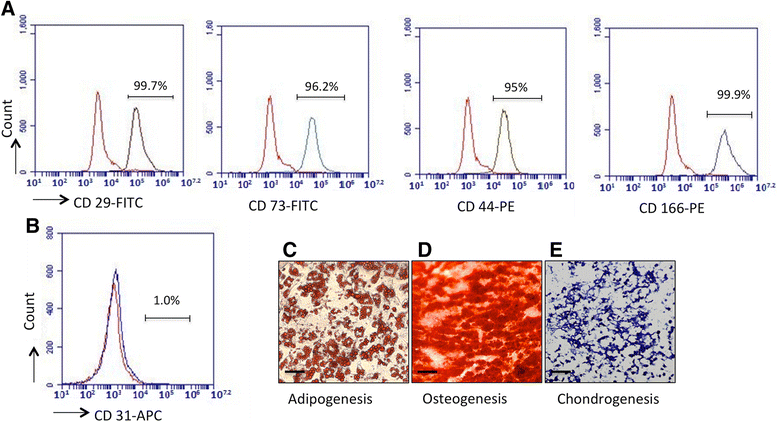
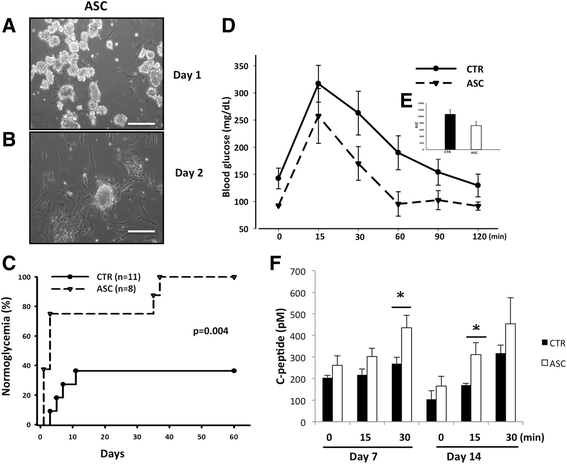
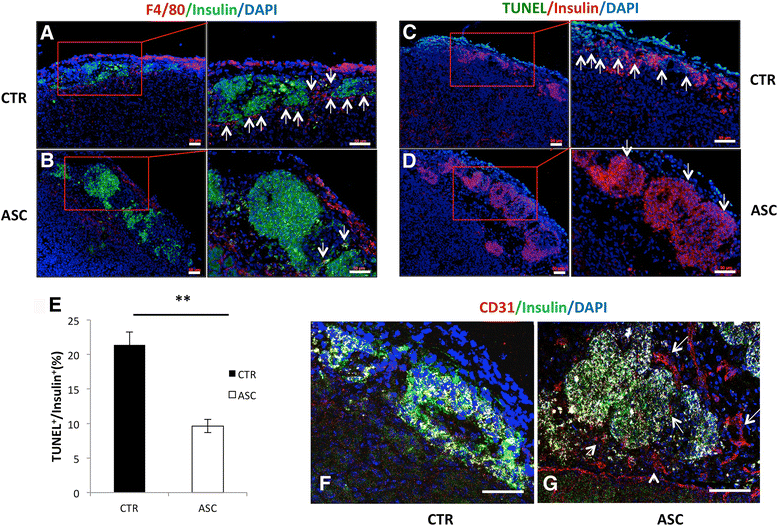
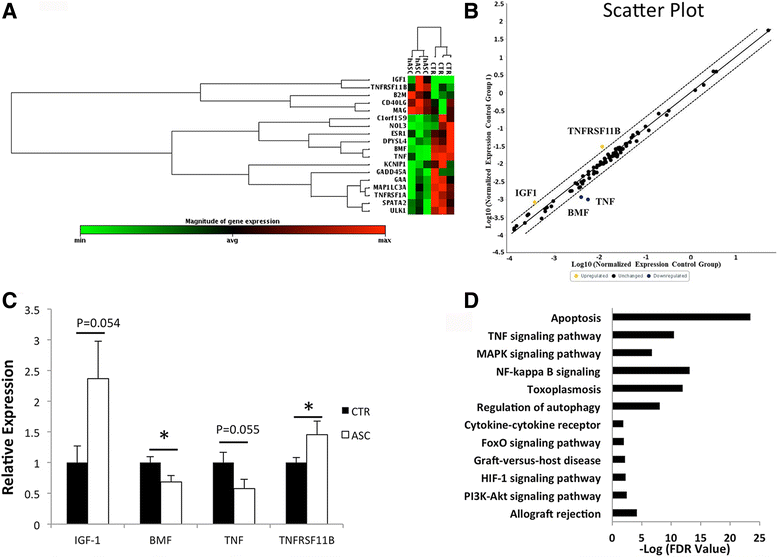
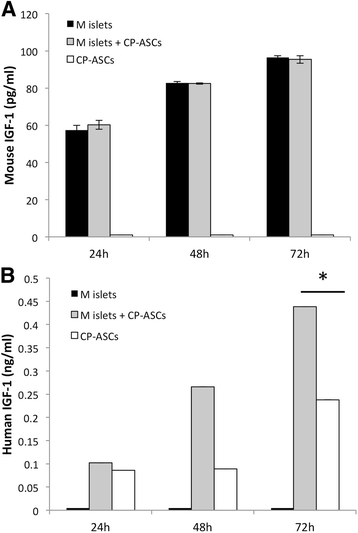
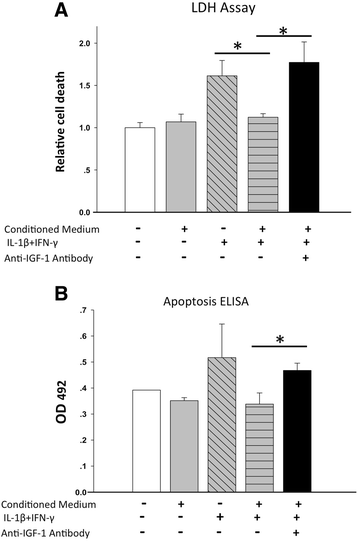
Similar articles
-
Combined transplantation of pancreatic islets and adipose tissue-derived stem cells enhances the survival and insulin function of islet grafts in diabetic mice.Transplantation. 2010 Dec 27;90(12):1366-73. doi: 10.1097/TP.0b013e3181ffba31. Transplantation. 2010. PMID: 21076379
-
Mesenchymal stem cells and islet cotransplantation in diabetic rats: improved islet graft revascularization and function by human adipose tissue-derived stem cells preconditioned with natural molecules.Cell Transplant. 2012;21(12):2771-81. doi: 10.3727/096368912X637046. Epub 2012 Apr 2. Cell Transplant. 2012. PMID: 22472472
-
Improvement of human pancreatic islet quality after co-culture with human adipose-derived stem cells.Mol Cell Endocrinol. 2020 Apr 5;505:110729. doi: 10.1016/j.mce.2020.110729. Epub 2020 Jan 21. Mol Cell Endocrinol. 2020. PMID: 31972330
-
Protecting islet functional viability using mesenchymal stromal cells.Stem Cells Transl Med. 2021 May;10(5):674-680. doi: 10.1002/sctm.20-0466. Epub 2021 Feb 5. Stem Cells Transl Med. 2021. PMID: 33544449 Free PMC article. Review.
-
Total Pancreatectomy with Islet Auto-Transplantation: Surgical Procedure, Outcomes, and Quality of Life.Adv Surg. 2023 Sep;57(1):15-30. doi: 10.1016/j.yasu.2023.03.002. Epub 2023 Apr 7. Adv Surg. 2023. PMID: 37536850 Review.
Cited by
-
Regenerative and Transplantation Medicine: Cellular Therapy Using Adipose Tissue-Derived Mesenchymal Stromal Cells for Type 1 Diabetes Mellitus.J Clin Med. 2019 Feb 15;8(2):249. doi: 10.3390/jcm8020249. J Clin Med. 2019. PMID: 30781427 Free PMC article. Review.
-
IGF-1 secreted by mesenchymal stem cells affects the function of lymphatic endothelial progenitor cells: a potential strategy for the treatment of lymphedema.Front Genet. 2025 May 21;16:1584095. doi: 10.3389/fgene.2025.1584095. eCollection 2025. Front Genet. 2025. PMID: 40469882 Free PMC article.
-
Progress and application of adipose-derived stem cells in the treatment of diabetes and its complications.Stem Cell Res Ther. 2024 Jan 2;15(1):3. doi: 10.1186/s13287-023-03620-0. Stem Cell Res Ther. 2024. PMID: 38167106 Free PMC article. Review.
-
Microvascular fragment spheroids: Three-dimensional vascularization units for tissue engineering and regeneration.J Tissue Eng. 2021 Aug 27;12:20417314211035593. doi: 10.1177/20417314211035593. eCollection 2021 Jan-Dec. J Tissue Eng. 2021. PMID: 34471514 Free PMC article.
-
Insulin-like growth factors: Ligands, binding proteins, and receptors.Mol Metab. 2021 Oct;52:101245. doi: 10.1016/j.molmet.2021.101245. Epub 2021 May 4. Mol Metab. 2021. PMID: 33962049 Free PMC article. Review.
References
-
- Dong H, Morgan K, Adams D, Wang H. Prevention of beta cell death in chronic pancreatitis. Adv Biosci Biotechnol. 2012;3(6A):782–7. doi: 10.4236/abb.2012.326098. - DOI
Publication types
MeSH terms
Substances
Grants and funding
LinkOut - more resources
Full Text Sources
Other Literature Sources
Medical
Miscellaneous

